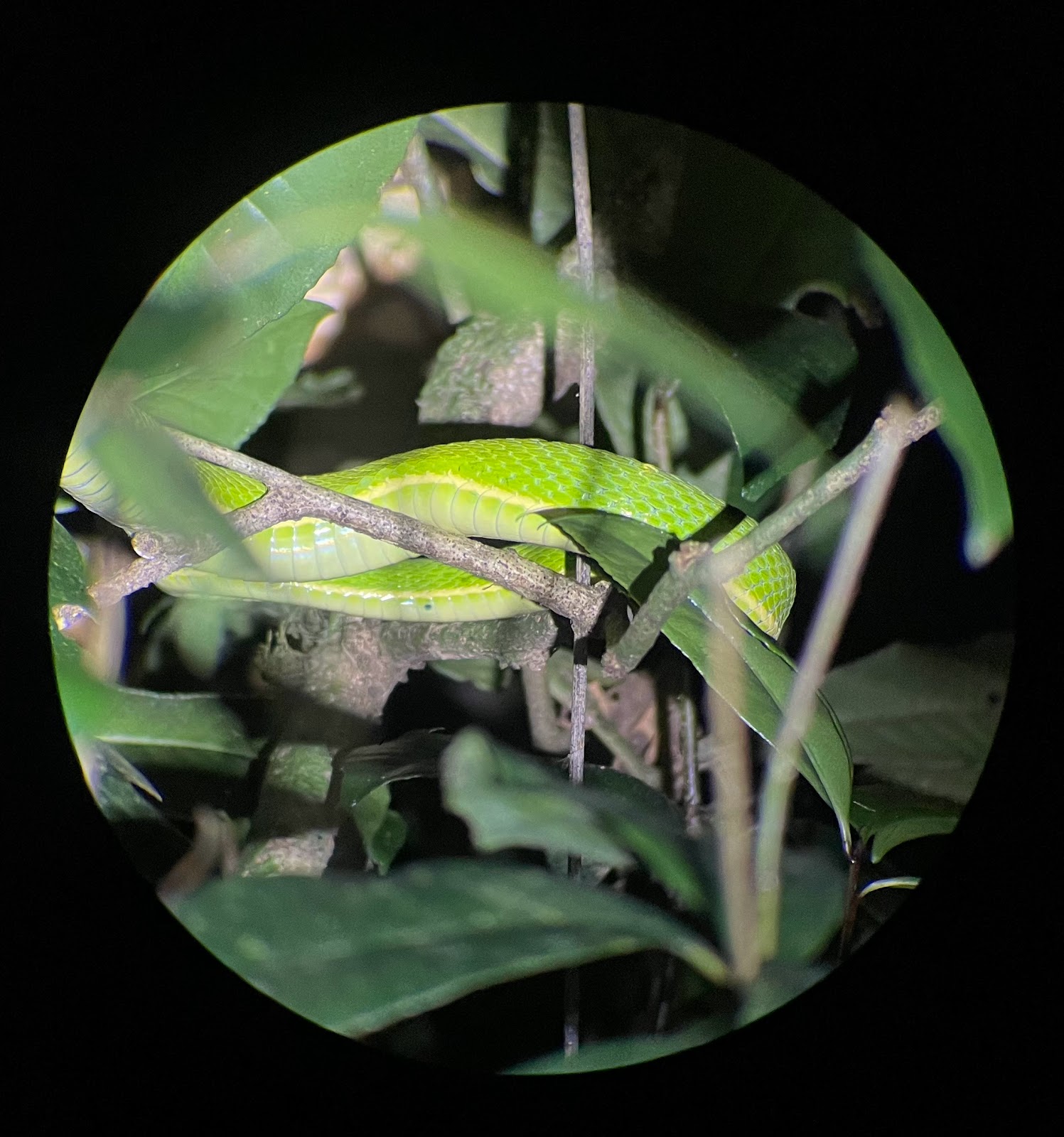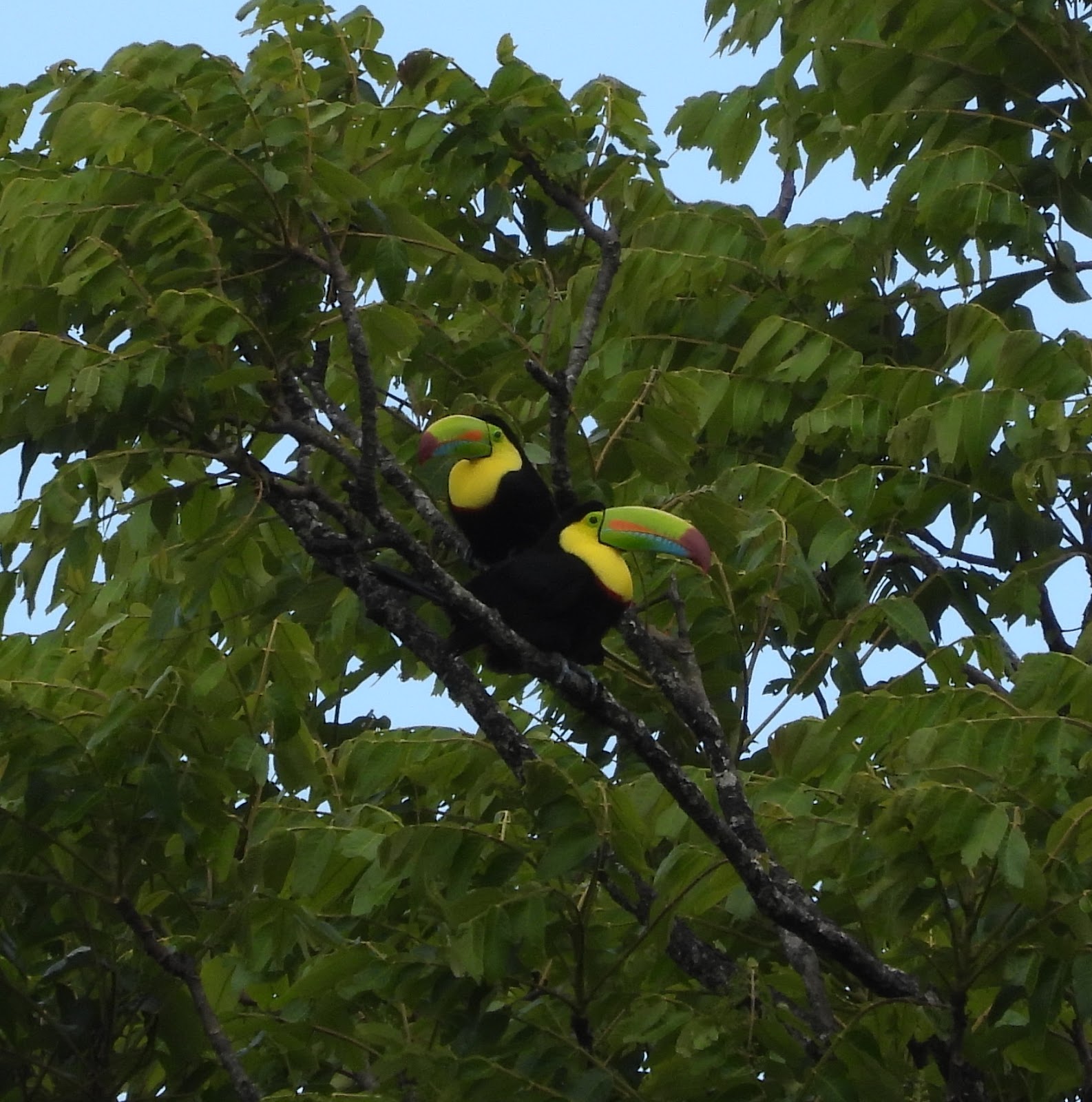We met first in Mexico City and flew together into San Jose. After picking up our rental car, we immediately headed out of the city. On first impression, San Jose is a big city (complete with the accompanying traffic) but it feels like the suburbs (with small, narrow streets and very few stoplights). It took over an hour just to get out of the city, and we were often stuck behind slow-moving trucks and school busses that belched out noxious clouds of black smoke.
 |
Monteverde is a unique ecosystem known as a cloudforest – a tropical forest with covered in mist and cloud, giving it a constant high level of moisture. This level of moisture also means that cloudforests have a ton of epiphytes. Cloudforests are unique because their high levels of biodiversity and endemism. Monteverde has over 2,500 plant species, including 420 types of orchids!
 |
| The rough roads to Monteverde |
Getting to the Rancho de Lelo ecolodge was an adventure itself – directions were difficult to follow and the roads are unpaved and VERY rough. After a slight detour, we finally made it at 6PM (so grateful to have found it during daylight, as we would never have found it in the dark!)
 |
| The best tilapia we've ever had - YUM! |
The lodge is a small family-run affair, and they were so nice and accommodating. We had dinner of the most delicious fresh fried tilapia, then since neither of us slept much on the plane, we went to bed early.
SATURDAY, APRIL 1
The next morning we had breakfast at the lodge (a delicious gallo pinto and fried eggs), then drove up another bumpy road to Santa Elena. Since we hadn’t made any reservations, we stopped at a coffee plantation but couldn’t get a tour, so we went into town for a quick coffee (and to the grocery store for random snacks and water), then drove up to the Sky Tour for lunch before our bridge tour.
Around Monteverde, there are several of these sky bridges that allow visitors to walk up above the tree canopies. The tour we took had 6 different bridges, with views of the treetops and a great birds-eye view of the cloudforest. And a much closer look at the epiphytes and other flora and fauna that live in and above the canopy. Because the clouds were rolling in, we couldn’t actually see that far, but it was still cool getting a different perspective of the rainforest.
On one bridge, we were up close to a flowering Inga tree that attracted several different species of hummingbirds, so we spend some time taking photos and enjoying the view. An interesting fact about the Inga - new leaves are actually brown, to resemble a dead tree, to fool predators.
That evening, we took a night tour with Joseph, the son-in-law of Rancho de Lelo’s owner. There were lots of other groups in the fairly small area, yet we saw so many interesting animals – which our guide explained are attracted to the reserve because the owners plant fruit trees nearby which attracting the wildlife.
 |
| I spy with my little eye... a walking stick! Do you? |
 |
| Side-striped Palm Pit Viper |
SUNDAY, APRIL 2
Woke early and headed up to another private reserve, Curi Cancha, to get a tour with Joseph. This reserve, near Monteverde, has a combination of primary and secondary forest along with pastureland, so according to Joseph, it is easier to spot wildlife. And there was also a high likelihood that we’d see the elusive resplendent quetzal, which was high on my wishlist, so I was happy to go.
 |
| Coppery-headed Emerald |
Soon into our hike, we peered into the hollow of a fallen tree and saw a sleeping orange-kneed tarantula. We also spotted two agoutis foraging on the hillside that conveniently came down across our path so that we could get a better look. But the majority of wildlife were birds, and we were able to spot several different varieties.
 |
| Keel-billed Toucan |
 |
| Blue-crowned motmot, with its pendulum-like tail feather |
Most importantly (and most excitedly!!), we got to see both the male and female Resplendent Quetzal. This distinctive bird has cultural significance to many indigenous cultures, where it is revered as a symbol of beauty, freedom, and power.
 |
| Female Resplendent Quetzal |
 |
| Male Resplendent Quetzal |
The quetzal is a vibrant, spectacular looking bird that truly lives up to its name - resplendent. It has iridescent bright green feathers on its back and head (which also sports a mohawk-like crest), with a rich red breast, and white highlights. The males grow long wispy tail feathers that can reach up to three feet in length which they use to attract females.
The male that we spotted was partially hidden behind some trees, but his twin tail feathers were easy to see (since they were almost three feet long and fluttering in the wind!) The female, which lacked the red highlights and long tailfeathers, was much easier to spot. It was a good time to see them since it was nesting season, and their favorite food is the wild avocado so they were in the same tree as the guan and the chlorophonia. Such a thrill to see them!
Since we had a few hours before we were going to be picked up for dinner, we decided to go into Santa Elena and hang out for a while. We went back to the same coffeehouse as the day before, then got a lunch of traditional Costa Rican food. As always, it was delicious (and I slightly regretted it since I was so full, and we had a big dinner ahead!)
 |
| Our table, in our private glass box |







No comments:
Post a Comment